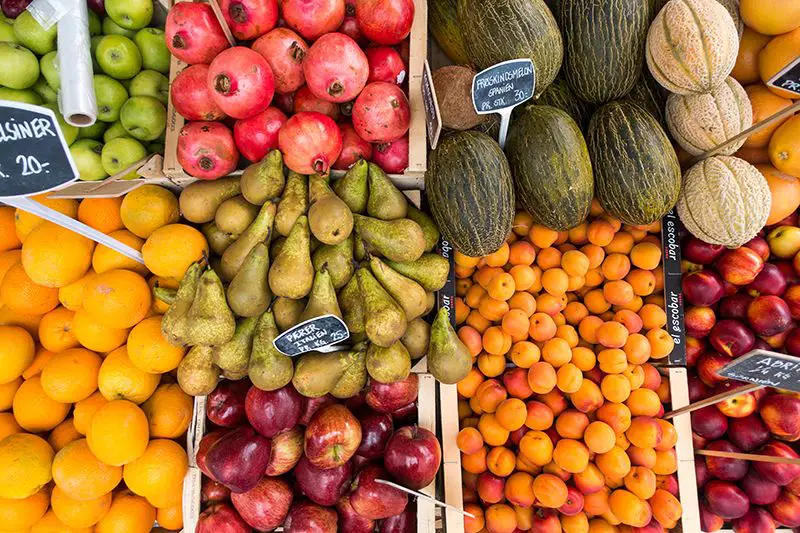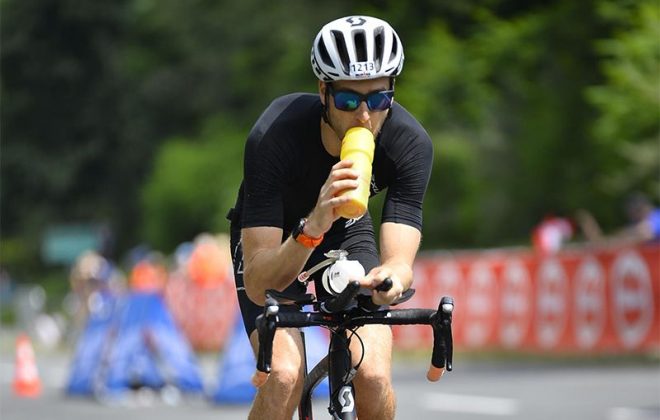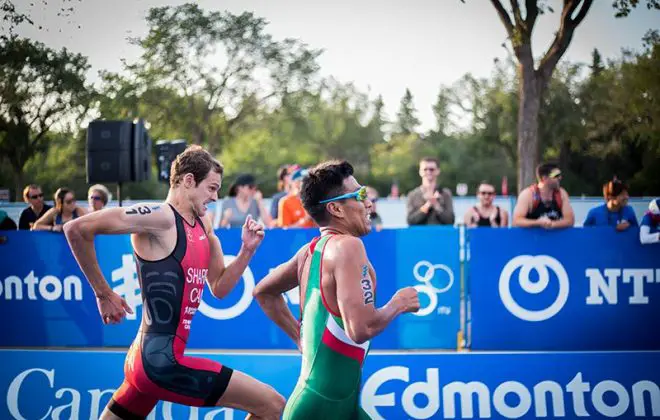Top 10 Endurance Athlete Diet Mistakes And How To Avoid Them
Endurance athlete diet has a lot of impact on performance. In fact, it might even be as important as the training itself. However, since there are so many factors and details in nutrition, this area is often overlooked.
Results from diet changes are also much harder to quantify than those from the training process. So, it’s not easy to tell if diet changes are working.
Endurance Athlete Diet Mistakes
I was recently browsing through my old training logs and noticed one entry that said “Very hungry after a 2.5 hour session. Went to McDonalds with the group to re-fuel.”
That’s a note from 10 years ago and while now it sounds completely bizarre, back then I honestly thought it was a good idea. I used to think that it’s all about the engine and how hard you train. So, I ate pretty much what I wanted and when I wanted.

Gradually, though, I started noticing some patterns that were not related to training. Having a bad sleep after eating too late, stomach problems when eating just before a training session and so on. All of this got me interested in learning how nutrition affects performance.
I did a lot of ‘nutritional’ mistakes in my training over the years. Below are some with the biggest impact and most popular among endurance athletes.
#1 Counting calories instead of nutrition density
In the fitness world there’s a lot of buzz on how much calories athletes should consume to lose/gain weight. However, the true value of food is not in how much energy (calories) it brings to our body, but rather how much vitamins & minerals it provides.
The main problem with counting calories is that it’s only a unit of energy. After an intense or prolonged exercise besides energy we also need to replenish vitamin & mineral sources which help our bodies to run smooth.
Endurance athlete diet should be balanced in both macro (carbs, protein, fat) and micro nutrients (vitamins & minerals). With a stronger focus on the latter.
When we re-fuel with calorie-rich and nutrient-poor foods (like ‘fast food’), we don’t provide our bodies enough nutrients to fully recover. So, we end up craving more food.
#2 Not having a set schedule
Eating at wrong times is, probably, one of the most popular endurance athlete diet mistakes.
A meal right before a training session creates heaviness in the stomach and takes away energy for digestion. Taking too long to eat after a training session adds additional stress to the body. Dinner less than 2 hours before bed interferes with sleep quality and slows down recovery.
Generally, all of the above originates from not having a schedule and eating at random times. Establish a habit of aligning meal times (and snacks) with my training and recovery helped me to maximize my performance.
#3 Snacking on unhealthy foods
Unhealthy foods – like chocolate bars, chips, sugary drinks, etc. – are tasty treats. However, relying on those as snack options is not a good choice.
Sugary snacks do not carry much value. They are basically ’empty calories’ which get stored as body fat if consumed in excess. As these foods don’t contain much fiber, vitamins or minerals, it’s hard for the body to feel satiated. So, again, we end up eating more.
Fruits and nuts are much better snack options. Berries are my personal favourite, as they have tons of antioxidants which helps to reduce muscle soreness and speed up recovery.
#4 Improper and inefficient hydration
Staying hydrated before, during and after training session is important to keep the body as efficient as possible. When the body gets dehydrated, performance suffers and energy levels drop.
However, during extensive training or training in the heat water alone is not enough. During excessive sweating it’s also very important to replenish electrolytes lost in sweat.
Electrolytes are minerals (sodium, magnesium, potassium, etc.) that help the body to maintain water balance and regulate nerve & muscle activity.
On hot days I like to take a self-made isotonic drink with me on long runs and bike rides. For a 750ml bottle mix the following:
- 2 tablespoons honey or maple syrup
- 1 tablespoon squeezed lemon juice
- 1/2 teaspoon sea salt
- 750ml water

The Resilient Athlete
A Self-Coaching Guide to Next Level Performance in Sports & Life
Are you aiming to become a resilient athlete who is able to withstand any pressure? Be able to jump on any opportunity? Take any challenge life throws at you head on?
Then this book is for you.
Learn more#5 Consuming too much processed foods and not eating enough fruits and vegetables
Much like unhealthy snacks, processed foods (pre-packaged meals, fast food, etc.) tend to be stripped of many nutrients. They contain highly concentrated sweeteners (like corn syrup, maltodextrin, fructose syrup, etc.), high amount of Omega 6 fatty acids and even trans fats.
All of that promotes inflammation across the body, which slows down recovery and stimulates development of various illnesses.
On top of that, concentrated chemical sweeteners send a signal to the body to release a high dose of hormone called insulin to decrease the blood sugar levels. Sudden drop of blood sugar that follows after a meal (~1hr) makes us feel hungry again and we end up eating even more.
A much better alternative is to cook ‘real’ meals with lots of vegetables as a base. That will provide the flavor and all possible vitamins and minerals for which immune & nervous system will be thankful.

#6 Cutting out fats from endurance athlete diet to lose weight
There was a period of time when low-fat products got super popular. The peak of that trend seems to have passed now, but there are still lots of people who try to lose excess weight by reducing the amount of fat they consume.
The reality is that fats don’t make people fat – it’s eating too much that does. In fact, the main source of energy during low intensity exercise is fat, which is why endurance athletes should consume more of it.
Not all fats are created equal, though. Animal fat (found in meat, fish & dairy), as well as that in processed foods increases the level of bad cholesterol and the risk of a heart attack. ‘Good fats’, on the other hand, do the exact opposite – those are found in products like avocados, nuts, seeds, olive oil, etc.
#7 Over-fueling during training
One frequent mistake endurance athletes make is they consume too much food before a long easy session and/or take too much with them.
The purpose of a long session is to build mitochondria in the muscles and ‘teach’ the body to utilize fat for fuel better. This helps the body to get more efficient at low intensity. However, when we consume too much before or during the session the body continues to rely on sugar instead of fat for fuel.
A good approach is to take in some sugar (a sip of sports drink or bite of energy bar) only when the hunger starts. That’s a signal that the blood sugar gets low and a little nutrition helps to return it back to normal. This way the body still relies on fat for fuel and remains aerobic.
#8 Using vitamins & supplements without a proper endurance athlete diet
Supplementing is like taking an easy route. It’s much easier to just swallow a pill rather than create a balanced diet rich in nutrients.
Generally, unless an athlete trains more than 2 hours every day (~15 hours per week), he/she doesn’t need any additional supplements. It’s perfectly possible to get all macro and micro nutrients from the diet.
Related: 14 Key Steps To An Effective Marathoner And Triathlete Diet
#9 Eating large and protein-heavy meals
Endurance athletes put their bodies through a lot of training stress and need to be able recover quickly. Eating large and heavy meals puts additional stress on the body and takes away the energy that could be used for recovery.
Protein, in particular, is the hardest to digest and puts a lot of pressure on kidneys and liver. It creates acidic environment, which promotes inflammation, stimulates ageing and even speeds up cancer growth.
Having 5-6 smaller meals throughout the day is a much more efficient way how endurance athletes can feed their bodies. As none of the meals is too large, the body can digest it faster and recover quicker.
Some of the athletes (myself included) have even switched to a vegetarian or plant-based diet to reduce the stress on the body’s digestive system. Such meals tend to be very light while at the same time rich in macro nutrients, vitamins and minerals.
#10 Training hard on empty tank
Training hard on empty stomach is one mistake that took the most time for me to understand. Often I went for a run before breakfast (or right after work) and come back tired and with a headache after running too hard without eating anything.
Fasted and early morning training is a great way to build endurance and burn some extra fat. However, this kind of training should be done at low intensity – no higher than Zones 1 -2. For a harder session it’s best to consume a carb-rich meal ~2-3 hours before.
Did you find this information useful? Share the post with others using the buttons below.
Have an opinion? Share via links below and tag @theathleteblog
Tags In
Andrejs
GET A FREE TRAINING PLAN
Subscribe to my email list and get access to a free 4-week “back in shape” training plan
You’ll also get two full-body strength sessions and some other goodies!

How did I get here?
Hey there! My name is Andrejs and I am here to inspire, entertain and get you fit for any adventure.
I went from being an over trained pro athlete to an endurance coach sharing how to listen to your body and live life to the fullest.
Traveling, new sports & activities brought new meaning to my training and made it much more effective, fun and enjoyable. And I'm here to help you do the same.


